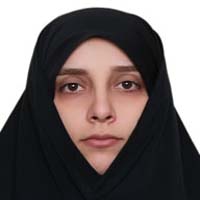Strategic Planning of Public Spaces in Order to Promote and Benefit from Social Interactions, Case Study: District 10 of Tehran Municipality
Public spaces and social interactions have a reciprocal relationship. The rapid urbanization, limited land availability, and neglect of these spaces in urban development initiatives have resulted in a scarcity of open and green areas per capita, consequently reducing social interactions. District 10 of Tehran, as the most densely populated area, suffers from a lack of both quantity and quality in public and open spaces. Furthermore, issues such as physical deterioration, disrupted urban landscapes, a high tenant rate, low social security, and a transient population have further diminished the quality of existing public spaces and the level of social interaction in this particular district. Hence, the aim of this study is to explore the potential for enhancing public spaces in order to promote social interactions in District 10 of Tehran. The chosen research methodology is descriptive-survey, with data collected through documentary and field studies. The SWOT and QSPM techniques have been employed for analysis. The findings reveal that various factors play a significant role in facilitating social interaction in public spaces. These factors include the diversity of activities, integration of land use, social inclusion, accessibility to public transportation, social security, memorability, safety, engagement of all senses, readability, visibility, flexibility, availability of urban furniture, materials used in urban furniture and pavements, climate comfort, and environmental health. Moreover, creating favorable conditions for the presence of children and the elderly would lead to increased supervision and social security. The superior scenario proposes a set of strategies, including aggressive strategies (SO1: Enhancing social security in existing public spaces, SO2: Promoting the development of open and green spaces on a per capita basis, SO4: Establishing local hangout spots and micro spaces for community gatherings, SO5: Allocating multicultural and artistic spaces, sports venues, etc.) and conservative strategies (ST1: Repurposing inactive municipal-owned spaces, ST2: Encouraging greater citizen participation in social activities). Ultimately, six prioritized strategies are identified, resulting in the formulation of 18 policies and 31 action plans.
-
Structural Analysis of the Dimensions of Stress Relief Urban Planning in Tehran
Khatereh Moghani Rahimi, Mostafa Behzadfar, *
Journal of Sustainable City, -
Examining the Level of Satisfaction of Tehran City Residents with Bus Service during the Covid-19 Pandemic
Armin Eslami, *, Hadi Gholami
Journal of Transportation Engineering,



